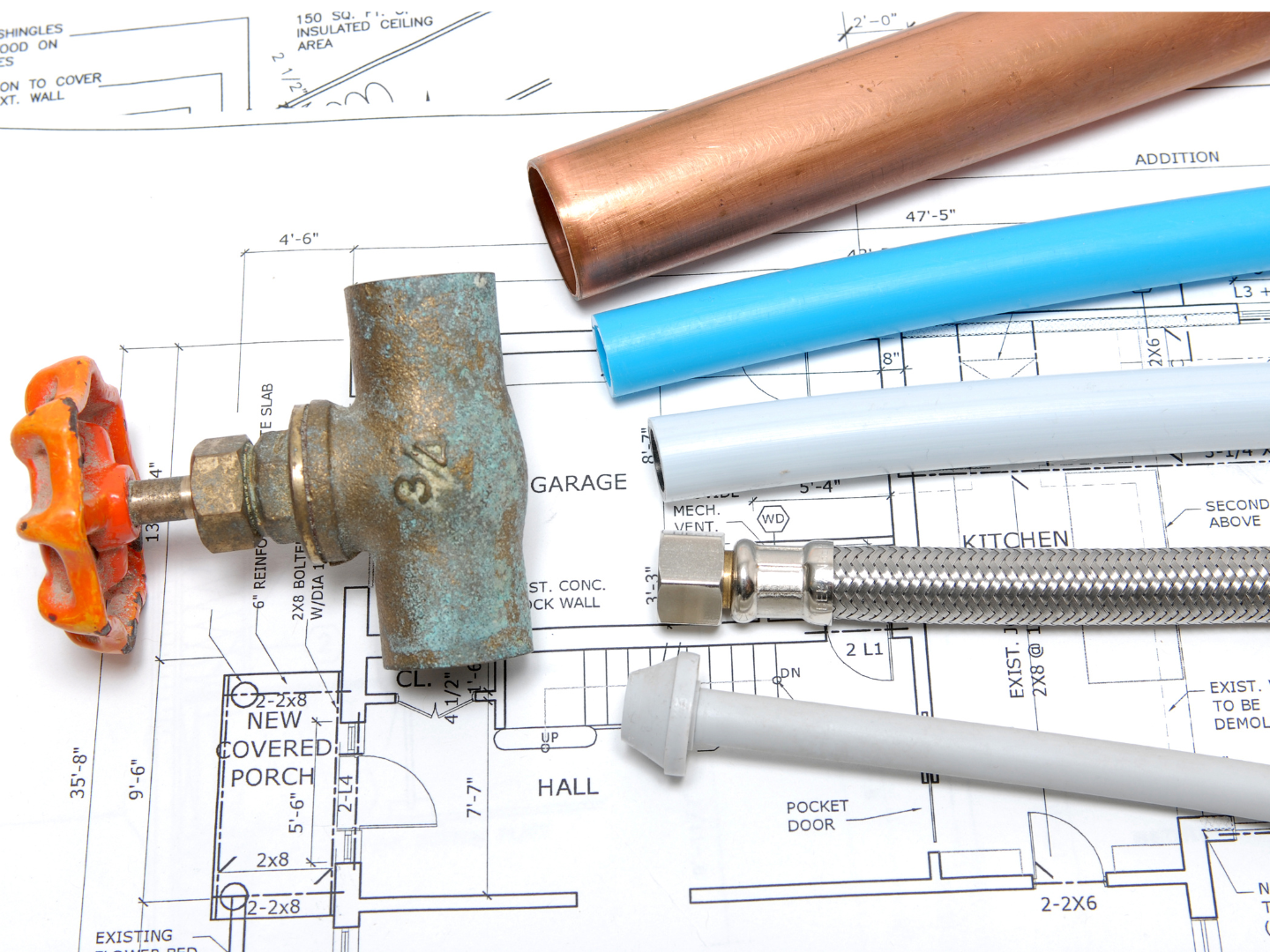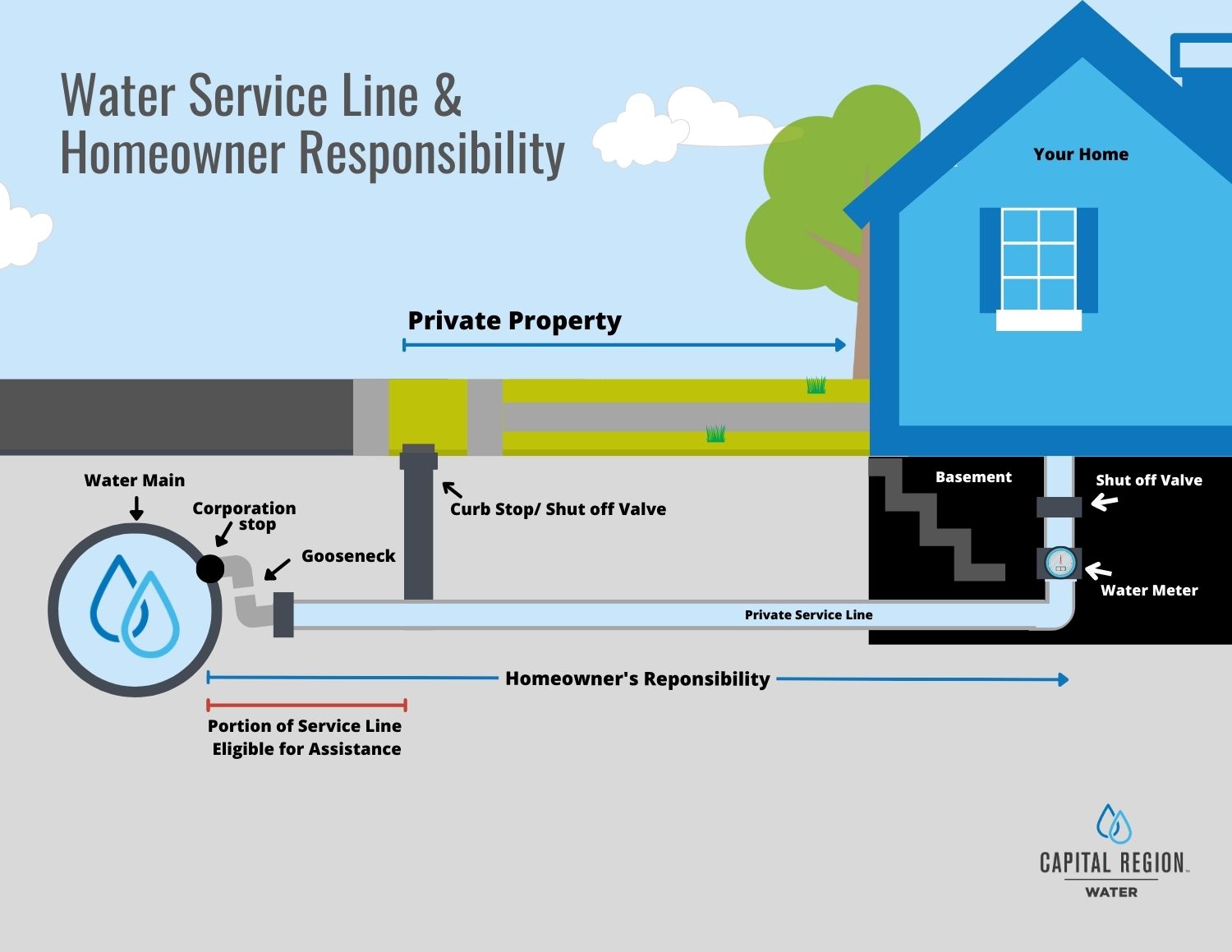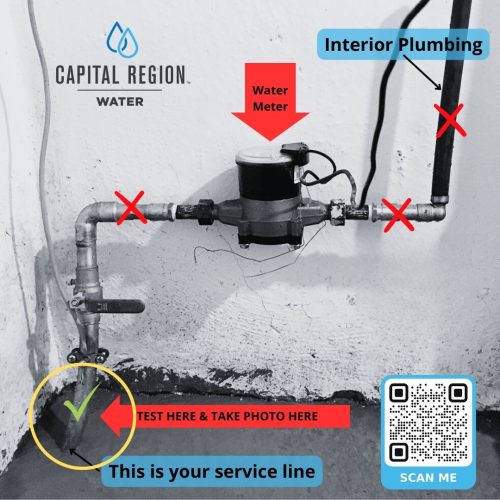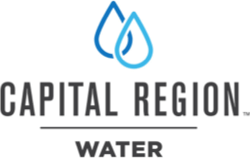At Capital Region Water we pride ourselves in providing drinking water that is safe, clean, and distributed efficiently to all customers.
Lead is not present in the drinking water supplied to your home or business. CRW regularly participates in Lead and Copper testing throughout our entire distribution territory. State and federal regulations require the 90th percentile lead level to be less than 15 parts per billion, meaning the lead level must not exceed this level in at least 90 percent of the homes sampled. Capital Region Water’s recent result was 0 parts per billion.

Understanding Lead & Your Drinking Water
What is Lead?
Lead is a common metallic element in nature and can be found in air, soil, and water. It is also a powerful toxin that is harmful to human health. Lead was used for centuries in plumbing because of its pliability and resistance to leaks; in fact, lead’s chemical symbol, Pb, is derived from the Latin word for plumbing. In 1986, Congress amended the Safe Drinking Water Act, prohibiting the use of pipes, solder, or flux that were not “lead-free” in public water systems or plumbing in facilities providing water for human consumption.
Why is lead a health risk?
Exposure to lead in drinking water can cause serious health effects in all age groups. Infants and children can have decreases in IQ and attention span. Lead exposure can lead to new learning and behavior problems or exacerbate existing learning and behavior problems. The children of women who are exposed to lead before or during pregnancy can have an increased risk of these adverse health effects. Adults can have increased risks of heart disease, high blood pressure, kidney, or nervous system problems.
How does lead get into drinking water?
Lead is not present in the water Capital Region Water supplies to the distribution system. However, in some older homes lead may be present in the pipe or fixtures connecting the home to the water system or in the home plumbing. Lead in service lines or plumbing can dissolve or break off into water and end up at the tap.
Zinc Orthophosphate for Corrosion Control.
Lead is not present in the water Capital Region Water supplies to the distribution system. Lead can enter the water when water mains or old plumbing systems corrode. To prevent the corrosion of pipes, Capital Region Water adjusts the pH of the water and adds a corrosion inhibitor (zinc orthophosphate). Under strict state and federal regulations, Capital Region Water is required to test for copper and lead in its drinking water every three years. Samples for this testing are taken directly from faucets in areas with the oldest water mains and from buildings that are most likely to contain lead in their plumbing systems. Capital Region Water’s recent lead sampling result was 0 parts per billion.
What can I do to reduce or eliminate lead exposure from my drinking water?
The best way to remove risks of lead in water is to completely replace all sources of lead. But there are also steps you can take right away.
- Run the Tap Before Use—Lead levels are likely at their highest when the water has been sitting in the service line or plumbing for several hours. Flush this water from your system by running the cold water for several minutes which allows you to draw fresh water from the water main. Other household/non-potable water usage activities such as: washing clothes, showering, flushing the toilet, and running the dishwasher are also effective methods of flushing the system
- Clean Aerators—Aerators are small attachments at the tips of faucets that regulate the flow of water. They can accumulate small particles of lead and other debris in the screens. It’s recommended to repeat this procedure every few weeks to prevent build-up.
- Use Cold Water for Drinking and Cooking—Using cold water for cooking and drinking can reduce your exposure to lead in the water. Hot water dissolves lead more quickly, resulting in higher levels of lead, if present, in water.
- Filter the Water—Lead is not present in the water Capital Region Water supplies to the distribution system. If you want another preventative measure for the plumbing inside your home, you can purchase an NSF Water Filter that is certified to remove lead from your water. This filter should be used for water that will be used for drinking and cooking.
Who Owns the Service Line?
Capital Region Water owns the drinking water mains in the street. Customers own and are responsible for the service line connecting their home to the water main. Replacing or repairing a service line may require coordination between the property owner and Capital Region Water.
How do I know if my home has a lead service line or lead plumbing?
You can hire a licensed plumber to inspect both your service line and other materials in contact with your drinking water. Capital Region Water can also assist you by providing information and guidance on how to identify a lead service line or lead plumbing in your home.
You may be able to determine, on your own, if your service line is made of lead. Service lines typically enter the home in the basement or crawl space. If the pipe is lead, it will have a dull finish that shines brightly when scratched with a key or coin. Using a magnet can also help you identify a lead pipe because even a strong magnet will not cling to a lead pipe.

Your Drinking Water Service Line:
Capital Region Water is seeking your help to identify the material of the water service line coming into your home. Accurate information about the location and condition of service lines allows us to plan and execute maintenance and replacement projects more efficiently.
Complete our Customer Survey here to identify and catalog your service line material. To determine whether your home has a lead service line or lead plumbing, you can hire a licensed plumber to inspect both your service line and other materials in contact with your drinking water.
In October of 2024, a full inventory map will be available to the public for an accurate, transparent view of the materials throughout our entire distribution system.
Together, we can create a safer, healthier, and more reliable water supply for our community. Thank you for being a part of this journey with us.
Please call our Customer Service Center with any questions or concerns at 888-510-0606 or email info@capitalregionwater.com.


Lead Pipe
If the pipe is silvery gray and: 1) is easily scratched, 2) the metal seems soft, and 3) a magnet does not stick to it, you likely have a lead pipe.
If you have a lead service line, it should be replaced. Please get in touch with us first to ensure additional inspection is completed and verified. Until then, you should consider water filters for drinking and cooking, especially if high-risk individuals live in the home.

Galvanized Steel
A galvanized steel water pipe is a gray metal color and, when tapped with a screwdriver, makes a metallic sound.
If the pipe is silvery gray, and hard to scratch, place your magnet on it. If the magnet sticks, your pipe is galvanized steel or galvanized iron.
Galvanized pipes may be sources of lead exposure due to upstream corrosion. If you have a galvanized pipe, it indicates an older installation, and you should have your water tested.

Copper Pipe
Copper is the same color as a new penny when first installed, then gradually transitions to the dark brown of an old one after a few years. If, when scratched, the pipe is orange and shiny like a penny, your pipe is made of copper. A magnet will not stick to it.
Though your service line pipe isn’t a source of lead, it could have lead in soldered joints. You may still want to test your water, especially if it’s an older system.

Plastic or PVC
Plastic pipes are found in a variety of materials and colors. They won’t produce a ringing sound when tapped with a coin, like the metal pipes.
If your line is plastic, it’s a more recent installation, and will also be free of lead solder. Your home’s internal plumbing is also at low risk for lead.
Lead & Copper FAQs
If present, elevated levels of lead can cause serious health problems, especially for pregnant women and young children. Lead in drinking water is primarily from materials and components associated with service lines and home plumbing. Capital Region Water is responsible for providing high-quality drinking water, but cannot control the variety of materials used in household plumbing components.
Under strict state and federal regulations, Capital Region Water is required to test for copper and lead in its drinking water every three years. Samples for this testing are taken directly from customer faucets in areas with the oldest buildings, which are more likely to contain lead in their indoor plumbing. Based on Capital Region Water’s service area size, a minimum of 30 samples are collected for each testing period every three years.
Customers can contract with a local environmental testing lab or purchase in-home test kits at their local hardware store. Capital Region Water does not recommend or endorse any specific laboratory or in-home test kit.
Capital Region Water will be collecting samples this year between June and September as part of our regulatory requirements. Results will be distributed to customers via newsletter and CRW website, as well as the 2023 Water Quality Report.
Following the mandated Lead and Copper Rule sampling plan, Capital Region Water recently completed its required Lead and Copper Rule sampling plan by testing 45 high-risk residential homes throughout its service area in 2022.
State and federal regulations require the 90th percentile lead level to be less than 15 parts per billion, meaning the lead level must not exceed this level in at least 90 percent of the homes sampled. Capital Region Water’s result was 0 parts per billion. Capital Region Water will test for lead and copper again in 2025.
Lead is not present in the water Capital Region Water sends into the distribution system. Lead can enter the water when there is corrosion of lead joints on water mains or plumbing systems containing lead. To prevent the corrosion of pipes, Capital Region Water adjusts the pH of the water and adds a corrosion inhibitor to prevent corrosion of water mains and indoor plumbing.
When your water has been sitting for several hours, such as overnight, you can minimize the potential for lead exposure by flushing your tap for 30 seconds to 2 minutes before using water for drinking or cooking. If you are concerned about lead in your water, you may wish to have your water tested. Information on lead in drinking water, testing methods, and steps you can take to minimize exposure is available from the Safe Drinking Water Hotline:
(800-426-4791) or at: http://www.epa.gov/safewater/lead

Water Quality Reports
Following its mandated Lead and Copper Rule sampling plan, Capital Region Water tests several high-risk residential homes throughout its service area. State and federal regulations require the 90th percentile lead level to be less than 15 parts per billion. Capital Region Water’s result can be found here in the annual Water Quality Report.
Common Questions About Drinking Water
What about other water contaminants?
Every year, Capital Region Water publishes a “Drinking Water Quality Report” that outlines the results of water quality testing for a number of contaminants.
Where does my drinking water come from?
Capital Region Water gets its drinking water from the DeHart Reservoir, a remote and pristine reservoir in the forested hills about 20 miles north of Harrisburg.
The DeHart Reservoir provides some of the highest-quality drinking water in the country. Our Water Services Center is staffed around the clock to treat, test, and produce over 7 million gallons of safe drinking water every day.
Capital Region Water also maintains three storage reservoirs at Reservoir Park, as well as over 200 miles of water mains, to deliver safe drinking water to every home and business in its service area.
Capital Region Water has received both the 10-year Director’s Award and the President’s Award from the Partnership for Safe Drinking Water for exceeding all state and federal drinking water standards.

